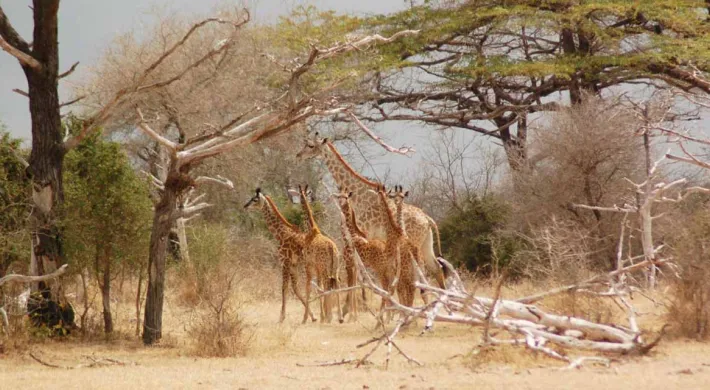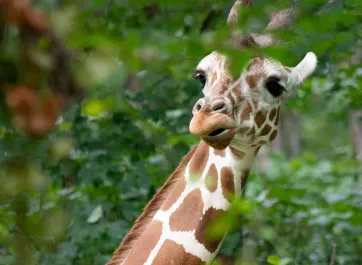North Carolina Zoo Announces Giraffe Calf Name Chosen by the Public on World Giraffe Day
Asheboro, N.C. –June 21, 2023 - The North Carolina Zoo is excited to announce the name of the male giraffe calf born on May 20.
The winning name is “Fenn,” after the founders of the Giraffe Conservation Foundation, Julian and Stephanie Fennessy. World Giraffe Day is celebrated every year on June 21.
The public was invited to vote in an online poll from a list of names provided by the Zoo's giraffe keepers. The public naming poll had a soaring response, with more than 100,000 votes.
The other names offered were:
Nelson: After Nelson Mandela.
Mosi: African name used for "firstborn son."
Tamu: Swahili for "sweet"
Jackson: The calf's dad is named Jack, "Son of Jack."
Bongani: This Zulu name means "grateful, thankful."
The parents are Leia (first-time mom), born in 2009 at Zoo Miami and arrived at the Zoo in 2014, and Jack, born in 2008 at Dickerson Park Zoo and arrived at the Zoo in 2009.
Their pairing resulted from a recommendation by the Species Survival Plan of the Association of Zoos and Aquariums (AZA), which maintains the genetic diversity of species that are in human care.
Fenn was about six feet tall and 145 pounds when born. He is expected to grow to 10-12 feet by his first birthday and reach full height at four years old.
Giraffes are the tallest land animals. Female giraffes are up to 14 feet tall, weigh 1,500 pounds, and are pregnant for 14 to 15 months.
Meanwhile, males are up to 18 feet tall and can weigh 3,000 pounds. At this height, a giraffe can look into a second-story window. Male and female giraffes can live to about 25 years in the wild and even longer under human care.
Fun facts: No two giraffes have the same coat pattern, like human fingerprints. And a group of giraffes is called a “tower.”
Giraffes are native to sub-Saharan Africa and are very social animals, traveling in large towers (groups) of all ages and sexes.
They are listed as a "Vulnerable" species according to the International Union for Conservation of Nature (IUCN), and approximately 68,000 are found in the wild, with numbers decreasing because of habitat loss, poaching (illegal hunting), and disease threatening their distribution throughout Africa.
The North Carolina Zoo is actively involved in giraffe conservation and research in Tanzania. You can read more about our staff working to save giraffes in the wild here on the Zoo's Blog.
The Zoo's giraffe tower now numbers five – males Jack, Turbo, and Fenn and females Leia and Amelia.
###



